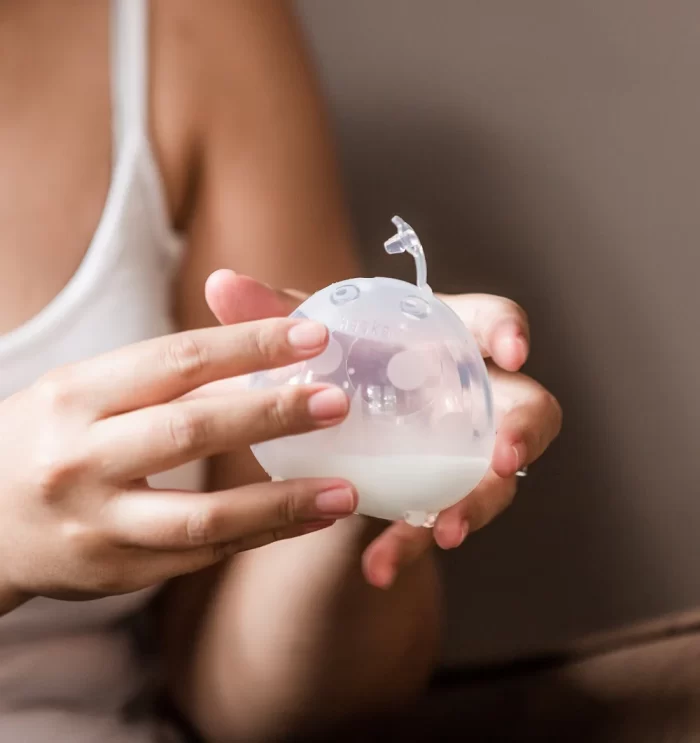Avoiding Oversupply When Using a Haakaa or Milk Collector: What Every Breastfeeding Parent Needs to Know

For many breastfeeding parents, products like the Haakaa or other milk collectors have become indispensable. These simple, silicone devices can gently collect milk on one side while you nurse from the other, capturing precious drops that might otherwise go to waste. For parents looking to build a small stash or relieve some engorgement, these tools can be fantastic. However, frequent use of a milk collector can sometimes lead to an unintended side effect: oversupply.
In this blog post, we’ll explore how oversupply can happen, what the signs are, and how to use your Haakaa or milk collector effectively without encouraging your body to produce more milk than your baby needs.
How Does a Haakaa or Milk Collector Work?
A Haakaa or similar milk collector is a passive suction device. When applied to the breast, it uses gentle suction to draw milk out, usually catching milk that would naturally leak from the non-nursing breast during a feeding session. Since it’s passive (not actively pumping), it’s often thought of as a “leak catcher” rather than a full-on milk remover, which makes it gentler than traditional electric pumps. However, even this gentle suction can still stimulate your breast tissue.
How Frequent Use Can Lead to Oversupply
Breastfeeding operates on a supply-and-demand principle: the more milk removed, the more milk the body is signaled to produce. Although a Haakaa is less intense than a pump, regular and frequent use can trick your body into thinking that more milk is needed.
Here’s how oversupply can develop:
- Frequent Stimulation: Using a milk collector at every feeding session may signal to your body that you’re feeding twins (or more!). Each time milk is removed, even passively, it cues the body to keep up production.
- Gradual Increase in Supply: With repeated sessions, the body starts to overproduce to match what it perceives as increased demand, which can lead to an oversupply over time.
Signs of Oversupply
If you’re using a Haakaa or milk collector frequently, it’s essential to watch for signs of oversupply. Here are some indicators:
- Frequent Breast Engorgement: If your breasts feel full or engorged regularly, even shortly after nursing or collecting, this may indicate an oversupply.
- Fast or Forceful Letdown: An oversupply can sometimes result in a strong letdown, making it challenging for your baby to manage the flow. Babies may cough, pull off the breast, or swallow rapidly to keep up.
- Gassy, Unsettled Baby: An oversupply can mean your baby gets more foremilk than hindmilk, leading to digestive issues. Foremilk (the milk that comes at the beginning of a feed) is higher in lactose and lower in fat, which can make some babies gassy and fussy.
- Frequent Leaking or “Spraying” Milk: If you’re noticing regular leaking or spraying of milk, it may be that your body is producing more than your baby can consume.
Managing and Avoiding Oversupply
If you’re concerned about oversupply, here are some ways to use your Haakaa or milk collector more mindfully:
- Limit Use to Once or Twice a Day: Using the Haakaa or collector just once or twice a day may reduce the likelihood of stimulating excess milk production.
- Alternate Use Based on Need: Consider using the collector only when you feel particularly full or need relief from mild engorgement. By applying it only when necessary, you’re less likely to overstimulate your supply.
- Use It as a Stash Builder, Not an Every-Feed Tool: If you’re aiming to create a small stash of milk, try using your collector during just one feeding per day or every other day. This approach can help build a stash without over-increasing your supply.
- Experiment with Suction Levels: If your Haakaa or collector allows, try using a lighter suction, just enough to catch leaks rather than actively pulling milk. This way, it acts more as a drip-catcher and less like a pump.
When to Seek Help
If you suspect oversupply is becoming a challenge for you and your baby, you may benefit from speaking to a lactation consultant. They can help you assess your supply, offer guidance for balancing milk production, and suggest techniques to help baby feed comfortably if you’re dealing with a strong letdown or excess milk.
In Summary
Milk collectors like the Haakaa can be a wonderful tool, but using them mindfully is key to maintaining a balanced milk supply. By adjusting your frequency and paying attention to your body’s response, you can enjoy the benefits of milk collection without the potential drawbacks of oversupply.
Remember, every parent and baby duo is different. Finding what works for you and keeping an eye on your body’s cues can help you create a smooth, enjoyable breastfeeding experience. Happy feeding!
This blog post should serve as a helpful guide to using a Haakaa or milk collector wisely, balancing milk supply, and avoiding the common pitfalls associated with overuse. At Babies in Bloom, we’re here to support you and your unique feeding journey every step of the way!
If You Liked this Article About Avoiding Oversupply When Using Milk Collectors, Check Out These Similar Articles:
- Is My Baby Getting Enough Milk? How Much Your Baby Needs in the First Year
- How to Overcome the Top 5 Breastfeeding Challenges & Feed Your Baby with Ease
- Your Step by Step Guide to a Comfortable Breastfeeding Experience
- Our Top 10 Benefits of Breastfeeding/Chestfeeding for Parent and Baby, With Tips and Tricks






